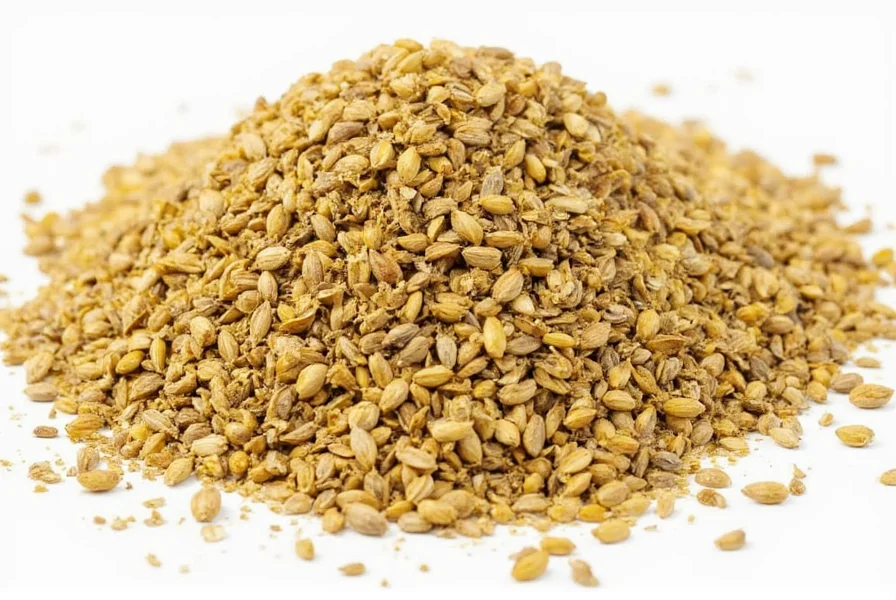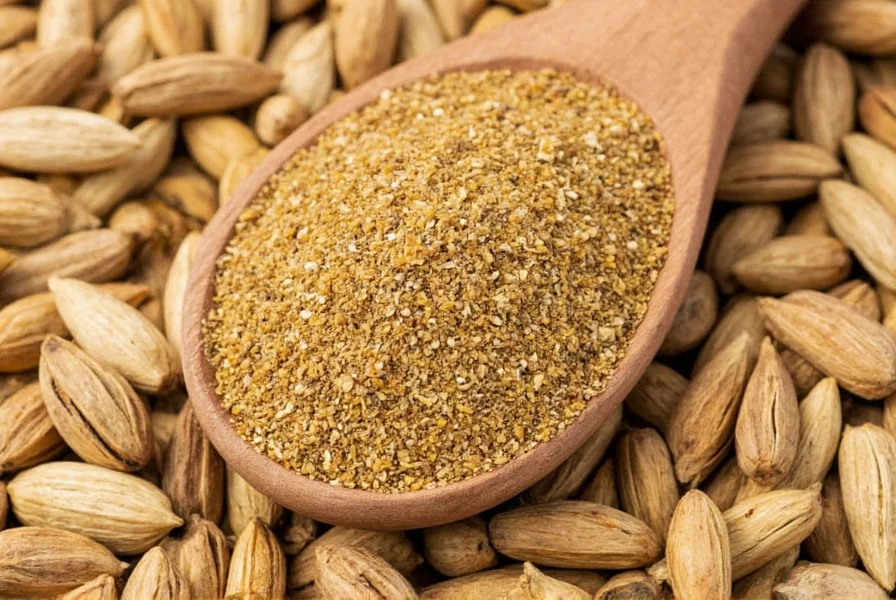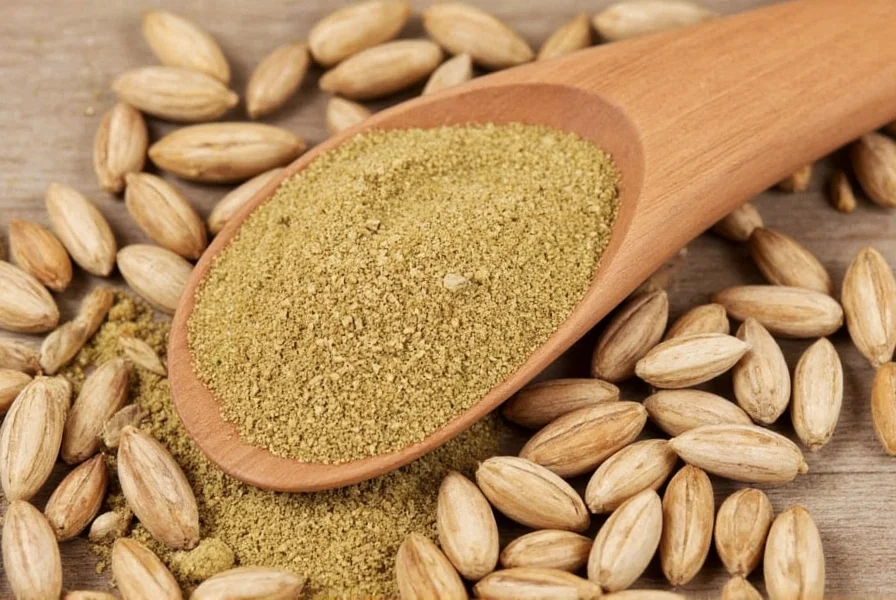Cardamom ranks among the world's most prized spices, second only to saffron in value. When recipes call for ground cardamom, understanding its unique properties becomes essential for achieving authentic flavors. This comprehensive guide explores everything home cooks and professional chefs need to know about using this versatile spice effectively.
What Exactly Is Ground Cardamom?
Ground cardamom consists of dried cardamom seeds pulverized into a fine powder. Most commercial products use Elettaria cardamomum (green cardamom), though some blends incorporate Amomum subulatum (black cardamom) for smokier notes. The grinding process releases volatile oils immediately, creating a more accessible but less complex flavor profile compared to whole pods.
When purchasing ground cardamom, check for vibrant greenish-tan color and strong citrus-pine aroma. Dull brown powder indicates age and diminished potency. For optimal freshness, many chefs prefer grinding their own from whole pods using a dedicated spice grinder.

Ground Cardamom vs Whole Cardamom: Critical Differences
Understanding the distinction between ground and whole forms significantly impacts recipe outcomes. The table below outlines key considerations for ground cardamom vs whole cardamom usage:
| Characteristic | Ground Cardamom | Whole Cardamom Pods |
|---|---|---|
| Flavor Intensity | Moderate (immediate release) | Stronger (gradual release) |
| Shelf Life | 6-12 months | 2-3 years |
| Best For | Baking, spice rubs, beverages | Braising, infusions, decorative use |
| Measurement Equivalent | 1 tsp = 10-12 pods | 1 pod = 1/12 tsp ground |
Optimal Culinary Applications for Ground Cardamom
Mastering how to use ground cardamom in baking requires understanding its flavor dynamics. Unlike whole pods which benefit from slow cooking, ground cardamom integrates quickly but loses complexity with prolonged heat exposure.
Baking Successes
Ground cardamom shines in Scandinavian and Middle Eastern pastries where its citrus notes complement sweet doughs. For Swedish kardemummabullar (cardamom buns), use 1½ teaspoons per 3 cups of flour. In Indian sheermaal bread, combine with saffron for floral complexity. When making chai-spiced cakes, pair with cinnamon and cloves at a 2:1:1 ratio.
Beverage Enhancements
For ground cardamom in coffee recipes, add ¼ teaspoon directly to coffee grounds before brewing. In Middle Eastern qahwa, combine with saffron and rosewater. When preparing masala chai, use ½ teaspoon per cup along with freshly grated ginger.
Savory Dish Integration
While often associated with sweets, ground cardamom elevates savory applications. Add ½ teaspoon to tomato-based curries during the final 10 minutes of cooking. Incorporate into Middle Eastern za'atar blends at 15% of the total spice mix. For Persian adasi lentil soup, combine with turmeric and cumin in equal proportions.
Precise Measurement Guidelines
Accurate ground cardamom measurement equivalents prevent overpowering dishes. Remember these professional standards:
- 1 whole green cardamom pod = approximately 1/12 teaspoon ground
- 10-12 crushed pods = 1 teaspoon ground cardamom
- Maximum recommended in single recipe: 1½ teaspoons (unless building complex spice profile)
When substituting ground for whole in recipes, reduce liquid content by 1-2 teaspoons per teaspoon of ground cardamom to account for moisture absorption.
Storage Techniques for Maximum Potency
Proper storage directly impacts does ground cardamom go bad concerns. Follow these evidence-based practices:
- Use airtight glass or metal containers (avoid plastic which absorbs oils)
- Store in cool, dark cupboard (not above stove or near dishwasher)
- Maintain temperature below 70°F (21°C) with humidity under 60%
- Never refrigerate (causes condensation and flavor degradation)
Test freshness by rubbing ¼ teaspoon between fingers - strong citrus-pine aroma indicates potency. Discard if powder appears dull brown or lacks fragrance after 12 months.
Effective Substitution Strategies
When facing ground cardamom substitution needs, consider these professional alternatives:
- Allspice: Use ¾ teaspoon allspice per 1 teaspoon cardamom (best for baking)
- Nutmeg + Cinnamon: Combine ½ tsp nutmeg with ¼ tsp cinnamon per tsp cardamom
- Clove + Coriander: Blend ¼ tsp clove with ¾ tsp coriander for savory dishes
Note that no substitute perfectly replicates cardamom's unique citrus-herbal profile. For critical recipes like Scandinavian pastries, seek specialty stores for fresh grinding rather than substituting.
Health Considerations and Traditional Uses
While not a medical treatment, traditional culinary uses of ground cardamom include digestive support and breath freshening. Scientific studies indicate potential antioxidant properties from cineole and limonene compounds. When exploring ground cardamom health benefits, remember:
- Typical culinary doses (¼-1 tsp) pose minimal risk for most adults
- May interact with blood thinners due to coumarin content
- Traditional Ayurvedic practice uses ½ tsp with honey after meals
- Not recommended in medicinal quantities during pregnancy
Always consult healthcare providers before using spices for therapeutic purposes.

Frequently Asked Questions
Can I substitute ground cardamom for whole pods in equal amounts?
No, use 1 teaspoon ground cardamom to replace 10-12 whole pods. Ground form has higher surface area and releases flavor more quickly, requiring less quantity for equivalent impact. For best results, reduce liquid by 1-2 teaspoons per teaspoon of ground cardamom when substituting.
How long does ground cardamom stay fresh after opening?
Properly stored in an airtight container away from light and heat, ground cardamom maintains peak flavor for 6-12 months. Test freshness by rubbing between fingers - vibrant citrus-pine aroma indicates potency. Discard if powder appears dull brown or lacks fragrance after 12 months.
What's the best way to grind cardamom pods at home?
For optimal homemade ground cardamom recipe results, toast whole pods in a dry skillet for 1-2 minutes until fragrant, then cool completely. Remove seeds from pods and grind in a dedicated spice grinder (not coffee grinder) until fine powder forms. Sift to remove fibrous husk remnants for smoother texture.
Why does my ground cardamom taste bitter?
Bitterness typically indicates either expired spice or excessive heat exposure. Cardamom's volatile oils degrade when exposed to prolonged high temperatures. Always add ground cardamom during the final 5-10 minutes of cooking. If bitterness persists, check expiration date - old cardamom develops unpleasant woody notes.
Which dishes showcase ground cardamom best?
Ground cardamom excels in Scandinavian cardamom buns, Indian chai, Middle Eastern coffee, and Persian rice dishes. It works particularly well in baked goods where even distribution matters, spice rubs requiring quick incorporation, and beverages needing immediate flavor release. Avoid using in long-simmered dishes where whole pods would provide better flavor development.











 浙公网安备
33010002000092号
浙公网安备
33010002000092号 浙B2-20120091-4
浙B2-20120091-4